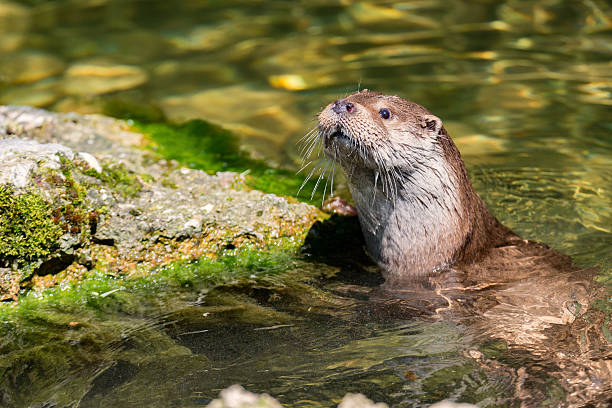Table of Contents
Scientific Classification
| Kingdom | Animalia |
| Phylum | Chordata |
| Class | Mammalia |
| Order | Carnivora |
| Family | Mustelidae |
| Genus | Lutra |
| Species | L. lutra |
| Scientific Name | Lutra lutra |
Description
The Eurasian Otter, known scientifically as Lutra lutra, is often referred to as the Old World otter or the European otter. This sleek, semi-aquatic creature brings a splash of life to rivers, lakes, and wetlands across Europe and parts of Asia. With its long, smooth body, thick waterproof fur, and webbed feet, the Eurasian Otter seems perfectly designed for a life spent in and around water.
Typically, these otters measure between 57 to 95 cm (22 to 37 inches) in length, with their tails adding an extra 35 to 45 cm (14 to 18 inches). Adult males usually weigh in at around 7 to 12 kg (15 to 26 lbs), while females tend to be a bit smaller. Their fur boasts a rich chocolate brown color, complemented by a lighter underside. It’s incredibly dense, featuring about 50,000 hairs per square centimeter, which helps keep them cozy in chilly waters.
With their expressive faces, bright eyes, and long whiskers (known as vibrissae), these otters are undeniably charming. Those whiskers play a vital role in helping them detect prey while swimming.
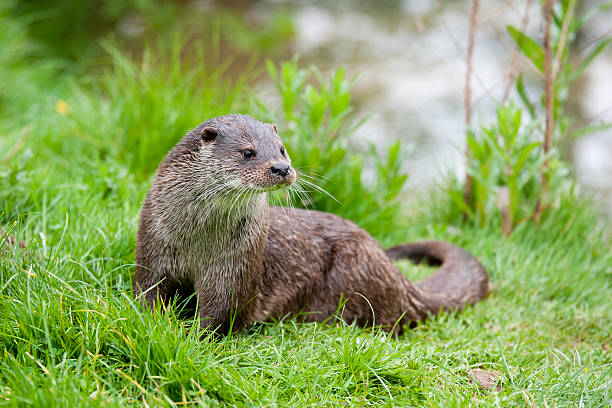
Distribution
The Eurasian Otter is one of the most widely recognized otter species, found from the Atlantic shores of Europe all the way to Southeast Asia. You can spot them in:
– Western and Central Europe (including the UK, France, Germany, and Spain)
– Scandinavia and Russia
– The Middle East and the Caucasus region
– Various parts of Central and East Asia (like China, India, Japan, and Thailand)
Unfortunately, many otter species faced significant declines during the 20th century due to pollution and habitat destruction. Thankfully, thanks to conservation efforts, their populations have started to bounce back in several regions.
Habitat
Eurasian Otters are incredibly versatile creatures. You can spot them near various bodies of water, like freshwater rivers, lakes, marshes, or even along the coast. They thrive in clean, unpolluted waters that are rich in vegetation and have plenty of food sources. The perfect habitat for these otters includes:
– Lots of cover, such as reed beds, overhanging plants, and rocky outcrops
– Quiet spots for resting, like holts or dens
– A healthy population of prey
While they are commonly found in freshwater environments, they can also adapt to brackish and saltwater areas, particularly in coastal regions of Scotland and Norway. Even in these marine settings, they still rely on freshwater sources for drinking.
Diet
Eurasian Otters are fascinating carnivorous hunters, primarily feasting on fish, which forms the bulk of their diet. These clever creatures are opportunistic eaters, adjusting their meals based on what’s available in their local environment and the changing seasons.
Their main food sources include:
– Fish (like trout, eels, and sticklebacks)
– Amphibians (such as frogs and newts)
– Crustaceans (like crayfish)
– Insects and their larvae
– Occasionally, small mammals and birds
Otters tend to be most active during dawn and dusk when they hunt. With their sensitive whiskers, they can detect the slightest movements of fish in murky waters. They’re quite the athletes too, capable of diving for up to 30 seconds to snag their next meal.
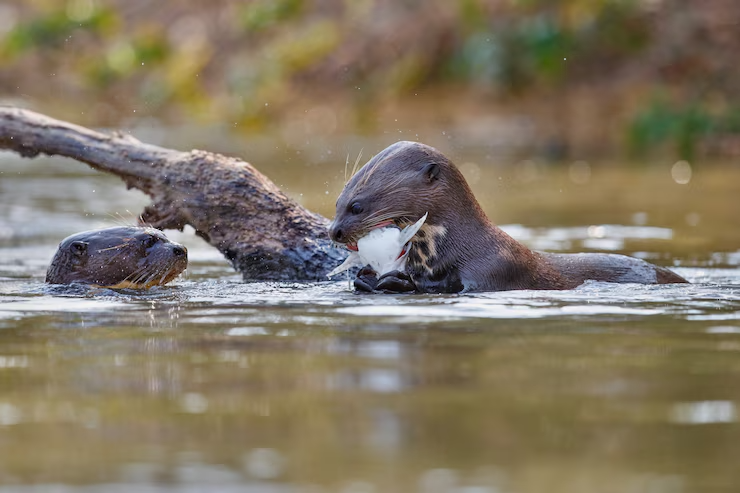
Behavior
Eurasian Otters are quite the elusive creatures, often keeping to themselves and making them tricky to spot. While they tend to be more active at night, you might catch a glimpse of them during the day in quieter spots. Each otter claims its own territory, which it marks with a distinct musky scent from its anal glands. These territories can stretch for several kilometers along riverbanks, and males are known to defend them with great determination.
These otters are also famous for their playful antics. Both young and adult otters love to slide around, wrestle, and play with various objects. This playful behavior not only helps them hone their skills but also strengthens their social connections. Plus, it’s a clear sign of their intelligence and curiosity.
When it comes to communication, they use a mix of vocalizations—like chirps, whistles, and growls—along with scent marking and body language.
Lifespan
In the wild, Eurasian Otters usually have a lifespan of about 4 to 10 years. Unfortunately, many of them face dangers from human activities, such as getting hit by cars or living in polluted waters. Young otters are also at risk from predators. However, when they’re in captivity, they can live for 16 years or even longer, thanks to consistent food and proper veterinary care.
Reproduction and Lifecycle
Eurasian Otters don’t have a set breeding season, but the timing can vary depending on the local climate. In warmer regions, they can breed throughout the year, while in colder areas, it tends to happen during specific seasons.
Once they mate, the gestation period lasts around 60 to 70 days. Females typically give birth to:
1 to 4 pups (usually 2 or 3)
In hidden holts close to water.
The pups are born blind and rely entirely on their mother. Their eyes start to open after about five weeks, and they take their first swims around two months old. Weaning happens between 3 to 4 months, but they usually stay with their mother for at least a year. Interestingly, the males don’t participate in raising the young.
They generally reach sexual maturity at about 2 to 3 years of age.
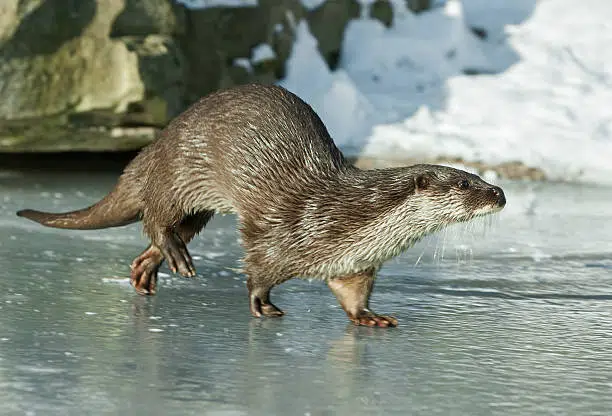
Predators
Adult Eurasian Otters have few natural predators, but young pups are more vulnerable. Depending on the region, predators include:
- Foxes
- Eagles
- Large birds of prey
- Wolves or wild dogs (in more remote regions)
Human activity is their biggest threat. Habitat destruction, pollution, illegal trapping, and road accidents all harm their survival.
Adaptations
The Eurasian Otter is a marvel of evolutionary adaptation to an aquatic lifestyle:
Physical Adaptations:
- Webbed feet: Enhance swimming capabilities.
- Streamlined body: Reduces drag while swimming.
- Dense fur: Provides insulation in cold water.
- Tail: Muscular and tapering, used for propulsion.
Sensory Adaptations:
- Whiskers (vibrissae): Detect movements of prey underwater.
- Nostrils and ears: Close automatically when submerged.
These changes help them be quiet and efficient hunters in water. They also move quickly on land.
Nest
The Eurasian Otter creates a den, called a holt, in which it can rest, sleep, and raise its young. Holts are typically:
- Located near water bodies
- Constructed in riverbanks, under tree roots, in rock crevices, or even man-made structures
- Lined with grasses and vegetation
Some otters use multiple holts in their territory. They choose different ones based on the season and weather.
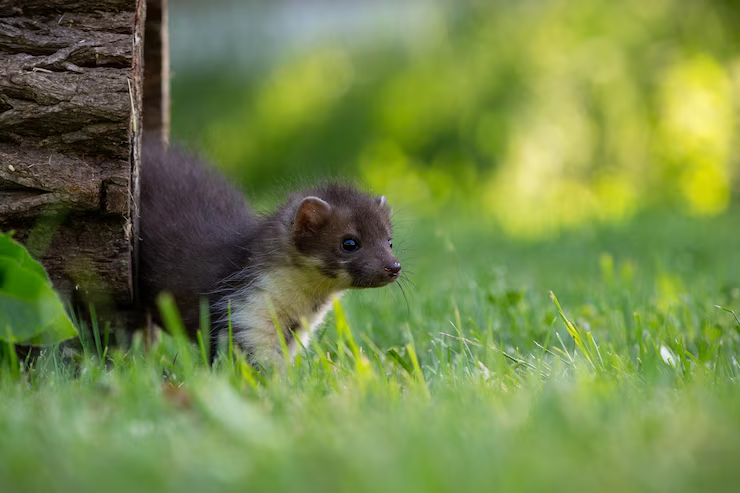
Mating Season
Breeding can happen all year long, but in colder regions, the main mating season typically spans from January to April, which is late winter to early spring. In warmer climates or places with milder winters, you might find births occurring in any season.
During courtship, you’ll see playful and sometimes even a bit aggressive interactions between males and females. Once mating is done, the couple usually goes their separate ways pretty quickly. The female is left to care for the pups all on her own.
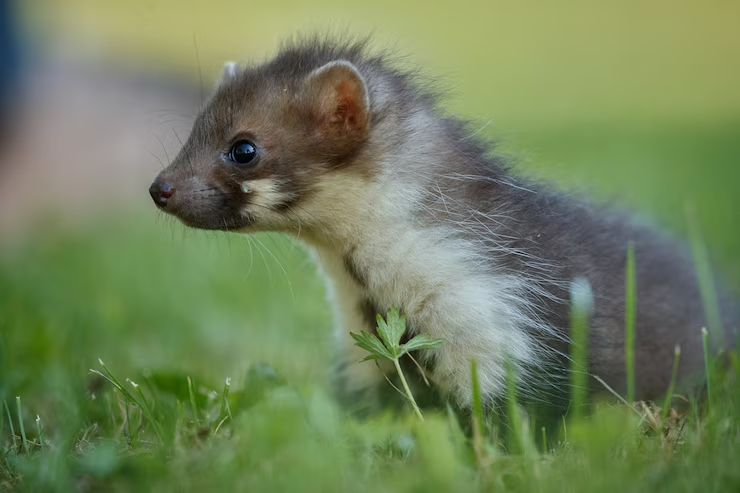
Breeding
Female Eurasian otters typically breed every year or every couple of years, depending on their environment and the survival rate of their pups. After giving birth, the mother takes on the responsibility of raising her young all by herself in a hidden holt. During this period, she becomes quite secretive and fiercely protective, ensuring that her pups remain undisturbed.
By the time they reach three months old, the little ones start accompanying their mother on hunting trips. This is when they begin to learn how to catch prey and navigate through the water. By the time they’re ready to establish their own territories, they’ve become adept swimmers and skilled hunters.
Interesting Facts
- Did you know these fascinating facts about otters?
- Aquatic Acrobat: These playful creatures can dive down to 4 meters and hold their breath for up to 30 seconds while they hunt for food.
- Fur Champion: Otters have incredibly thick and waterproof fur, which made them highly sought after by trappers and fur traders back in the day.
- Playful by Nature: One of the coolest things about otters is that they’re among the few non-primate mammals that actually use tools. They cleverly use rocks to crack open shellfish!
- Silent Swimmers: When it comes to hunting, otters are stealthy. They glide through the water so quietly that their prey often doesn’t even see them coming.
- Scent Language: Otters have a unique way of communicating through scent marking. They leave behind dung, known as “spraints,” to signal their territory, health, and even their readiness to mate.
- Cultural Icon: In various Celtic and Native Eurasian cultures, otters are seen as symbols of joy, curiosity, and guidance.
Conservation Status
The IUCN Red List labels the Eurasian Otter (Lutra lutra) as “Near Threatened” globally. Some countries have made progress thanks to conservation efforts. However, they still face many challenges:
Main Threats:
- Habitat Loss: River channelization, dam construction, and urban development fragment their living spaces.
- Road Accidents: Many otters are killed while crossing roads near waterways.
- Illegal Hunting: Some areas still face poaching for fur and competition with fisheries, even with legal protections.
Conservation Efforts:
- Legal protection under the EU Habitats Directive
- Reintroduction programs (e.g., in the UK and parts of Germany)
- Habitat restoration and improved water quality in many regions
- Roadway crossing tunnels and fencing in otter hotspots
With ongoing conservation efforts, the future looks good for the Eurasian Otter. However, we must stay alert and protect their habitats.
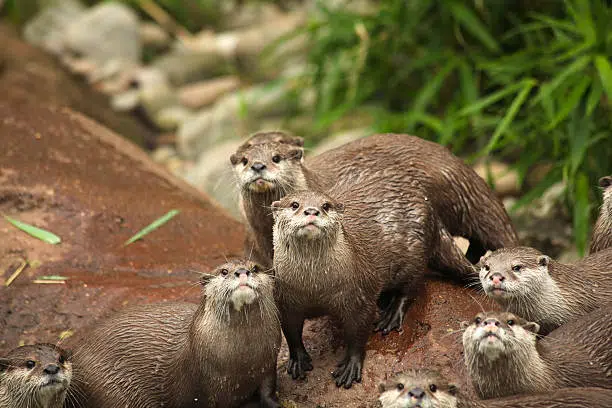
Conclusion
The Eurasian Otter isn’t just an adorable creature found in the rivers of Europe and Asia; it’s a symbol of environmental health. This sleek predator embodies a delicate balance, effortlessly moving between land and water, mixing moments of solitude with playful antics, and navigating the fine line between survival and joy.
Seeing an otter zip through a river or pop up from a patch of reeds offers a glimpse into nature’s incredible resilience. The Eurasian Otter serves as a reminder that even the most unassuming animals need a safe haven as we strive to protect biodiversity.

